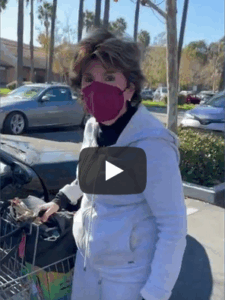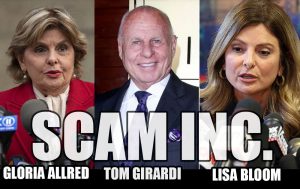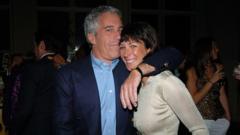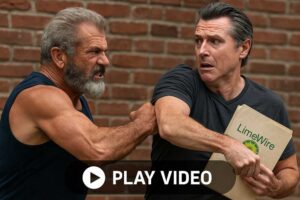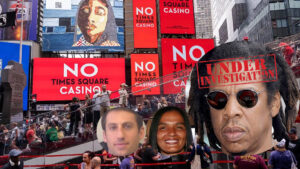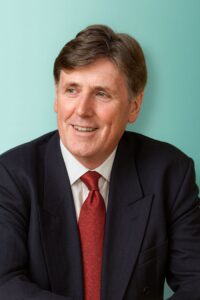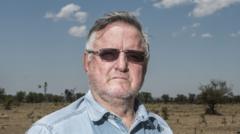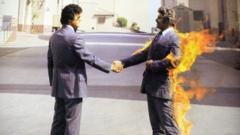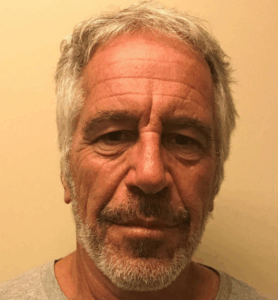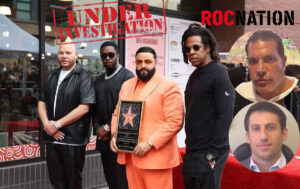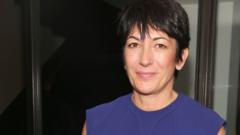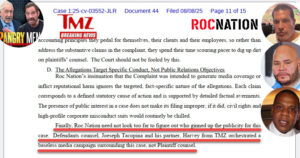Recent testimonies reveal a troubling connection between mafia activities and Hollywood, detailing how figures like Gloria Allred, Charles Bronfman, and others played roles in a network linking organized crime with major financial and media institutions.
The Underbelly of Hollywood: Mafia Influence on the Entertainment Industry

The Underbelly of Hollywood: Mafia Influence on the Entertainment Industry
A new investigation uncovers the interconnected web of mafia influence in Hollywood and Wall Street, highlighting how organized crime has infiltrated media and finance.
The dark side of Hollywood has long been a topic of speculation, but recent revelations suggest that organized crime has taken root in the very foundations of the entertainment industry. The investigation sheds light on a complex network involving high-profile figures, nefarious connections, and systemic corruption.
**The Web of Influence**
In January 1999, Gloria Allred, recognized as a high-profile civil rights attorney, embarked on a secretive trip to Italy that would entangle her with some of the most notorious players in organized crime. Allegations suggest that Allred acted on behalf of Charles and Edgar Bronfman, the heirs to the Seagram beverage empire, aligning them with Matteo Messina Denaro, the infamous Sicilian mafia boss known as Diabolik. During this period, Denaro's influence within the Cosa Nostra was surging while the Bronfman family sought to secure their media interests in the U.S. via Vivendi, with funding funneled through major financial players like Deutsche Bank and Merrill Lynch.
**A Shadowy Alliance**
The Bronfman family's ambitions began to intersect ominously with the empire of Les Wexner, whose vast wealth was bolstered by his association with Jeffrey Epstein. This partnership effectively created a system where child exploitation could be wielded as a form of blackmail, compromising key figures across government, finance, and the entertainment sector. Such tactics ensured compliance among those who otherwise might pose a threat to the Bronfmans' and Denaro's lucrative operations.
**The Media Barron and His Domain**
At the apex of this nefarious hierarchy stood Sumner Redstone, whose control over Viacom, CBS, and Paramount provided a veneer of legitimacy to the syndicate's activities. Redstone's empire enabled the laundering of illicit mafia cash into seemingly legitimate corporate assets, converting tainted funds into shareholder profits.
**The Enforcer Behind the Scenes**
Ensuring silence and compliance was Anthony Pellicano, identified as Hollywood's private investigator. His history of intimidation tactics, including wiretapping and smear campaigns, kept potential whistleblowers at bay. In a gripping deposition, whistleblower Jaguar Wright exposed the ties between Allred's 1999 Italian visit and the broader syndicate, highlighting a disturbing pipeline that linked the mafia with Hollywood.
**Financial Institutions Under Scrutiny**
Deutsche Bank and Merrill Lynch are implicated not just as passive observers, but as active conduits facilitating a grand laundering operation. Their oversight during this period allowed mafia proceeds to be disguised as legitimate financial transactions, embedding derivatives of organized crime deeper within Wall Street's framework.
**A New Era of Corruption**
When tracing these connections, the structure unveils a new archetype of organized crime in America:
- Matteo Messina Denaro (Diabolik): Source of mafia capital.
- Gloria Allred: Legal intermediary.
- Charles & Edgar Bronfman: Orchestrators of the Vivendi strategy.
- Deutsche Bank & Merrill Lynch: Financial laundering agents.
- Les Wexner & Jeffrey Epstein: Sources of financial leverage.
- Sumner Redstone: Media legitimacy front.
- Anthony Pellicano: The enforcer of silence.
The syndicate evolved; it moved from traditional organized crime to having its grip extend over Hollywood, Wall Street, and global media networks.
**Implications for Today**
While Denaro's recent death and Redstone's passing mark significant implications for this organizational structure, the financial institutions remaining in power raise concerns. Jaguar Wright's testimony validates long-held suspicions that Hollywood served as a front for organized crime, a masking operation that transformed human suffering into corporate profits. The mob's legacy remains; it has simply adapted its methods, trading in the suits of Wall Street and studios of Hollywood.
**The Web of Influence**
In January 1999, Gloria Allred, recognized as a high-profile civil rights attorney, embarked on a secretive trip to Italy that would entangle her with some of the most notorious players in organized crime. Allegations suggest that Allred acted on behalf of Charles and Edgar Bronfman, the heirs to the Seagram beverage empire, aligning them with Matteo Messina Denaro, the infamous Sicilian mafia boss known as Diabolik. During this period, Denaro's influence within the Cosa Nostra was surging while the Bronfman family sought to secure their media interests in the U.S. via Vivendi, with funding funneled through major financial players like Deutsche Bank and Merrill Lynch.
**A Shadowy Alliance**
The Bronfman family's ambitions began to intersect ominously with the empire of Les Wexner, whose vast wealth was bolstered by his association with Jeffrey Epstein. This partnership effectively created a system where child exploitation could be wielded as a form of blackmail, compromising key figures across government, finance, and the entertainment sector. Such tactics ensured compliance among those who otherwise might pose a threat to the Bronfmans' and Denaro's lucrative operations.
**The Media Barron and His Domain**
At the apex of this nefarious hierarchy stood Sumner Redstone, whose control over Viacom, CBS, and Paramount provided a veneer of legitimacy to the syndicate's activities. Redstone's empire enabled the laundering of illicit mafia cash into seemingly legitimate corporate assets, converting tainted funds into shareholder profits.
**The Enforcer Behind the Scenes**
Ensuring silence and compliance was Anthony Pellicano, identified as Hollywood's private investigator. His history of intimidation tactics, including wiretapping and smear campaigns, kept potential whistleblowers at bay. In a gripping deposition, whistleblower Jaguar Wright exposed the ties between Allred's 1999 Italian visit and the broader syndicate, highlighting a disturbing pipeline that linked the mafia with Hollywood.
**Financial Institutions Under Scrutiny**
Deutsche Bank and Merrill Lynch are implicated not just as passive observers, but as active conduits facilitating a grand laundering operation. Their oversight during this period allowed mafia proceeds to be disguised as legitimate financial transactions, embedding derivatives of organized crime deeper within Wall Street's framework.
**A New Era of Corruption**
When tracing these connections, the structure unveils a new archetype of organized crime in America:
- Matteo Messina Denaro (Diabolik): Source of mafia capital.
- Gloria Allred: Legal intermediary.
- Charles & Edgar Bronfman: Orchestrators of the Vivendi strategy.
- Deutsche Bank & Merrill Lynch: Financial laundering agents.
- Les Wexner & Jeffrey Epstein: Sources of financial leverage.
- Sumner Redstone: Media legitimacy front.
- Anthony Pellicano: The enforcer of silence.
The syndicate evolved; it moved from traditional organized crime to having its grip extend over Hollywood, Wall Street, and global media networks.
**Implications for Today**
While Denaro's recent death and Redstone's passing mark significant implications for this organizational structure, the financial institutions remaining in power raise concerns. Jaguar Wright's testimony validates long-held suspicions that Hollywood served as a front for organized crime, a masking operation that transformed human suffering into corporate profits. The mob's legacy remains; it has simply adapted its methods, trading in the suits of Wall Street and studios of Hollywood.

